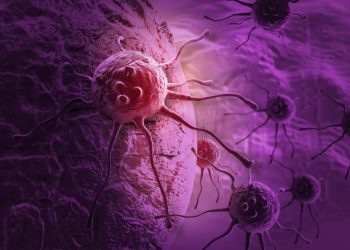Many people have leukemia that requires treatment. Your specific treatment plan depends on the type of leukemia you have and whether it is acute or chronic.
Your doctor will test for leukemia cells in your bone marrow, the soft spongy tissue inside the bones where blood is made. They will use a needle to remove a sample of marrow from your hipbone.
Bone marrow biopsy
The first step in leukemia treatment is to find out whether there are cancer cells in your bone marrow. Bone marrow is the spongy tissue inside your bones that makes blood cells. In this test, a medical professional takes a sample of bone marrow cells or a small piece of bone marrow from your hip. They then look at the cells or tissue under a microscope. You can usually have this test in the outpatient department or on a hospital ward (inpatient).
The next step is to determine the type of leukemia you have and how likely it is to return. They may suggest chemotherapy — a drug or combination of drugs that kills leukemia cells or keeps them from multiplying, depending on your condition. This is often given in cycles. They may also recommend radiation therapy, which uses high-energy rays to kill cancer cells or stop them from growing. This is often done with a large machine that targets the area around the spleen, brain or other organs. It may also be used to help destroy any leukemia cells that have spread to the central nervous system before a bone marrow transplant.
A bone marrow transplant replaces the leukemia-producing bone marrow with healthy marrow from another person. They may use their own marrow (autologous transplant) or marrow from a donor who is compatible with you (allogeneic transplant). After receiving the new marrow, you will receive additional chemotherapy to destroy any remaining cancer cells in your body.
Blood tests
Leukemia starts when the DNA of a developing blood cell in your bone marrow changes (mutates). The DNA contains the “instructions” that tell a cell when to grow, develop and die. The mutated cells keep multiplying and don’t die as they should. As more and more of these cells develop, they build up in your blood and destroy other healthy cells.
Your doctor can find out if you have leukemia by looking at a sample of your blood. A complete blood count (CBC) can reveal abnormally high levels of white blood cells and low red blood cell or platelet counts, which may be a sign of leukemia.
Other blood tests can identify the type of leukemia you have and the status of your disease. For example, a special test can determine if your leukemia is Philadelphia chromosome positive. Other tests can also find out if your leukemia is acute or chronic and what type it is, how fast it’s growing, and what symptoms you have.
Your doctor will use the results of your blood tests and other information about your illness to create a treatment plan. Depending on the type of leukemia, treatment may include chemotherapy to kill cancer cells, control their growth and relieve symptoms. Radiation therapy and surgery are rarely used for leukemia, but they might be an option if your leukemia has not returned after treatment or is in remission.
Chemotherapy
Chemotherapy uses chemicals to kill leukemia cells or keep them from multiplying. It may be given as a pill, through a tube inserted into a vein, or as injections under the skin. Sometimes chemotherapy is combined with other treatments, such as radiation therapy or a bone marrow transplant.
The chemo drugs used in leukemia treatment can affect healthy blood cells, so doctors typically give them in cycles, with treatment days interspersed with rest days. This allows the body to recover between cycles. Some people may be able to receive chemotherapy at home, while others will need to stay in the hospital for some or all of their treatments.
Some types of leukemia, especially acute lymphocytic leukemia (ALL), are harder to treat than others. Some patients don’t achieve remission or the leukemia returns after treatment. If this happens, doctors might try high-dose chemotherapy, targeted therapy, clinical trials or palliative care to manage symptoms and improve quality of life.
Some types of leukemia are treated with chemotherapy that targets specific parts of the cancer cell, such as a gene or protein that causes it to overtake healthy blood cells. These kinds of specialized treatments are called targeted therapies, and they can be given along with chemotherapy or as part of a bone marrow transplant. Radiation therapy is a type of targeted treatment that uses powerful energy beams, called X-rays or radiation, to kill leukemia cells and stop them from growing. It may be directed at specific spots in the spleen or brain, or it can be distributed throughout the whole body.
Targeted therapy
As soon as doctors know what type of leukemia you have, they can design a treatment plan. They’ll use drugs to destroy the cancer cells and relieve symptoms. They might also use radiation and surgery for some cases.
Chemotherapy is usually the first step in leukemia treatment. It’s used for most types of the disease and is given in cycles. During the chemotherapy cycle, you get medicine every day or several times a week in a clinic or at home.
Some chemo drugs are small enough to slip inside the cancer cell and kill it. They work by blocking certain signals that the cell sends out to grow and survive. You may get these medicines as pills or as injections in a vein. They’re sometimes called “targeted therapy.”
Other targeted therapies work by attacking a specific abnormality in the cancer cell or its surroundings. This approach is known as “molecular targeting.”
These newer medications are part of the standard care for some types of leukemia, including acute myelogenous leukemia and myelodysplastic syndrome (MDS). Oncologist-researchers at Johns Hopkins continue to look for more effective targeted therapy drugs and combination therapies.
If you have leukemia that doesn’t respond to the standard treatments, your doctor might recommend a clinical trial. A clinical trial is a research study that tests whether a new treatment is safe and works better than the standard one.
Radiation therapy
For many types of leukemia, the goal is to achieve remission and improve your quality of life. The first step is to kill the cancer cells with chemotherapy drugs. This can be done in several different ways. Chemotherapy is often used in combination with other treatments.
Your doctor will help you understand your prognosis, including how likely it is that the cancer will return after treatment. They may use the information from your blood and bone marrow tests to predict how well you might respond to specific treatments. They can also give you a rough idea of how long your remission might last.
You might consider a clinical trial to test an experimental treatment. These trials are usually available only at research hospitals or universities. Your doctor will explain the possible benefits and risks of participating in a clinical trial.
The most common type of leukemia treatment is chemotherapy. The goal of chemotherapy is to kill leukemia cells and prevent them from multiplying. These drugs are usually taken by mouth or injected into a vein (IV). They might be given alone or in combination with other anticancer drugs.
Targeted therapy uses medications to attack specific parts of leukemia cells without harming normal cells. These targeted drugs can block the growth of cancer cells, cut off their blood supply or cause them to die. This can be done alone or with other therapies, such as radiation therapy. Radiation therapy is also used to shrink a tumor before surgery or to help other treatments work more effectively.









